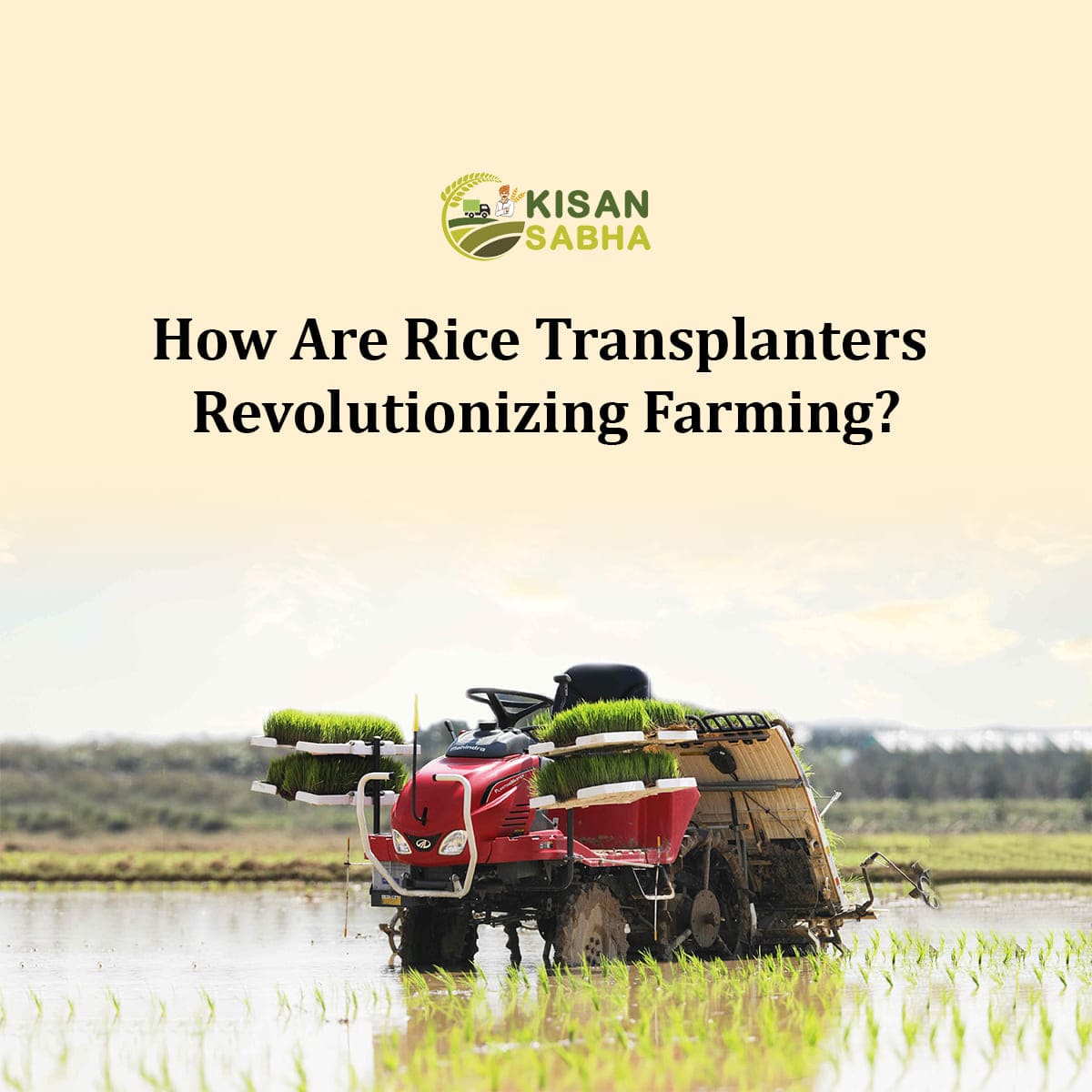Rice transplanters have been an important food for millions of people especially in Asian countries for hundreds of years. First, rice growers used to directly sow seeds into the ground, a tedious process at best. Originally, farmers using the transplanting technique had to pull out seedlings that grow in a special transplanted area and then transplant them individually into muddy soil. Furthermore, it was also very cumbersome and labor-intensive to do such a task.

The Birth of Rice Transplanters
How It All Started?
However, all this changed in the 1960s when Japanese engineers brought to life the first-ever rice transplanter. Subsequently, this machine revolutionized rice farming by doing the hard work automatically. Firstly, these machines could quickly and precisely plant rice seedlings in neat, straight rows.
How Rice Transplanters Work?
Modern rice transplanters are sophisticated machines with:
- Powerful engines
- Sharp cutting blades
- Strong suction systems
- Precise planting mechanisms
Furthermore, these machines come in different sizes to suit various farm types, from small family farms to large agricultural enterprises.
Amazing Benefits of Rice Transplanters
Saving Time and Increasing Productivity
Incredibly, rice transplanters can increase planting speed by up to ten times compared to manual methods. Therefore, farmers can:
- Cover larger areas quickly
- Reduce physical labor
- Increase overall crop yields
- Potentially earn more money
Smart Water Management
Additionally, modern transplanters have special systems that:
- Control water usage precisely
- Ensure optimal soil moisture
- Help conserve valuable water resources
- Promote sustainable farming practices
Better Plant Growth
Mechanical transplanting offers significant advantages:
- Consistent spacing between seedlings
- Reduced competition for nutrients
- Improved overall crop health
- More uniform plant development
Advanced Farm Management
Moreover, rice transplanters provide farmers with:
- Real-time field condition data
- Crop progression tracking
- Input application insights
- Better decision-making capabilities

Challenges Farmers Face
High Initial Cost
Unfortunately, good rice transplanters can be expensive. However, potential solutions include:
- Government subsidies
- Low-interest loans
- Cooperative ownership models
- Shared machinery programs
Training and Skill Development
Undoubtedly, learning to use these machines requires proper training. Subsequently, recommended approaches include:
- Organized training programs
- Hands-on workshops
- Video tutorials
- Mentorship from experienced users
Spare Parts and Maintenance
Interestingly, the availability of replacement parts can be challenging. Therefore, manufacturers should:
- Create reliable distribution networks
- Maintain adequate spare part inventories
- Offer local technical support
- Develop user-friendly maintenance guides
Cultural Resistance
Sometimes, farmers are hesitant to adopt new technologies. However, strategies to overcome this include:
- Demonstrating clear benefits
- Sharing success stories
- Organizing field demonstrations
- Providing practical training
Also Read:- How Indian Farmers Can Earn More Through Fruit Farming
The Future of Rice Transplanters
Ongoing Research and Development
Researchers are continuously working to:
- Create smaller machines
- Reduce manufacturing costs
- Improve durability
- Adapt to different environmental conditions
Collaborative Efforts
Remarkably, governments, companies, and farmers are working together to:
- Develop better technologies
- Make machines more accessible
- Share knowledge
- Support agricultural innovation
Technology and Sustainability of Rice Transplanters
Rice transplanters are more than just machines – they’re game-changers for modern farming. Indeed, these remarkable tools represent a significant leap forward in agricultural technology.
Agricultural Progress
- Moving beyond traditional farming methods
- Embracing modern, efficient techniques
- Increasing crop productivity
- Reducing manual labor
Technological Innovation
- Introducing smart farming solutions
- Utilizing advanced engineering
- Creating precise planting mechanisms
- Transforming agricultural practices
Sustainable Farming Practices
- Conserving water resources
- Minimizing environmental impact
- Optimizing land use
- Reducing chemical inputs
- Supporting long-term agricultural health
Improved Farmer Livelihoods
- Reducing physical strain
- Increasing income potential
- Providing better working conditions
- Creating opportunities for growth
Key Takeaways for Smart Farmers
Moreover, here are essential insights for farmers:
Stay Open-Minded
- Welcome new technologies
- Be curious about innovations
- Challenge traditional thinking
- Embrace continuous learning
Seek Knowledge
- Attend training programs
- Watch tutorial videos
- Learn from experienced farmers
- Read agricultural magazines
Understand Machine Benefits
- Compare traditional vs. modern methods
- Calculate potential savings
- Analyze long-term advantages
- Recognize efficiency improvements
Start Small
- Begin with affordable options
- Explore cooperative ownership
- Consider shared machinery
- Gradually expand investments
Build Community
- Share your experiences
- Discuss challenges
- Learn from each other
- Support fellow farmers
Furthermore, technology is transforming agriculture. Ultimately, farmers who adapt and learn will lead the way in creating a more productive, sustainable future.
Conclusion
Rice transplanters are transforming agriculture. Furthermore, they offer unprecedented opportunities to:
- Increase farm productivity
- Use resources more efficiently
- Improve farmers’ lives
- Contribute to global food security
Despite challenges, the future looks promising. Consequently, farmers who embrace these technologies will be better positioned to succeed in modern agriculture. Therefore, dear farmers, stay curious, keep learning, and be ready to grow with technology. Undoubtedly, your hard work, combined with innovative tools like rice transplanters, will help feed the world more effectively than ever before.





